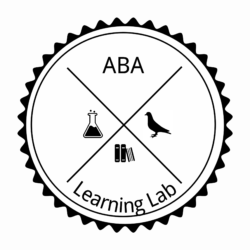By James Macon, M.Ed., BCBA
Tell me if this sounds familiar; you’re running late for an appointment, but if traffic cooperates, you’ll make it there with plenty of time. You enter the expressway (which is Michigander for Interstate) and merge to the leftmost lane, signaling to others on the road that you plan on traveling faster than the normal pace. The left lane is, after all, the passing lane. The posted speed limit sign you pass indicates the speed limit is 70 mph, and you breath a sigh of relief as you feel more and more reassured that you’ll make it to your appointment on time.
Then, your heart sinks. As your speeding along, you run into an unexpected line of traffic across all 3 lanes. You frantically slam on your brake, hoping that cars behind you do the same. Your rate of travel decreases from 75 mph to 50 mph, and then to 45, and then to 40, before it slowly starts to pick back up. All the while, your blood pressure simultaneously increases from a cool 70 beats per minute to 90 beats per minute.
As you start moving again, you look beyond the immediate horizon of cars to find the source of the slowdown. In the right lane (the slow lane), cars are moving at a stable 55 mph. The middle lane is moving at approximately the same pace. To your surprise, so is the left lane. There is 1 lone holdout in the fast lane, traveling a tempered 55 mph, with a long line of cars frantically trying to pass him. Those frantic drivers are desperately trying to pass the slow driver, and are engaging in dangerous behavior to try and get around him, including tailgating and darting in and out of traffic, from the left, to the middle, the right, then back to the left lane, all to pass the slow driver. When those drivers dart left and right, it resulted in the cumulative slowdown of the other lanes. Our slow driver, all the while, seems oblivious to angst of the drivers behind him and clueless that he has just effected the driving behavior of all of those around him.
Those lane shifts to get around the slow driver are dangerous. A lane shift in heavy traffic greatly increases the probability of a car crash. Those in the slower lanes, minding their own business, may get distracted for a moment, and not consider that someone would dart in front of them, potentially resulting in a crash. Those doing the darting between lanes may not be able to see traffic in the right lane, hidden out of view by other vehicles. The point is, any shift between lanes in high traffic scenarios increases the risk of something going wrong, resulting in a crash. In Michigan alone, there were over 312,172 car crashes in 2016, of which, 980 were fatal (or including serious injury). Many of those occur because of the scenario described above. In those cases, our slow driver in the fast lane was an antecedent to risky driving behavior, resulting in a fatal crash.
As a Behavior Analyst, I want to use our science to address this problem. How do we improve safe driving behavior? It is, after all, just behavior. Are there antecedents and consequences that we can re-arrange? Are there rules we can establish that will help this?
For starters, while most areas of the United States already specify that the left lane is reserved for fast traffic and those passing slower vehicles, this rule is not universally known. There are no consequences attached to it. Those in the left lane are required to yield to traffic wishing to overtake, but from our example earlier, this doesn’t always happen. This “rule,” from a behavior analytic perspective, is ineffective. Either our slow driver didn’t know the rule, didn’t care, or a competing rule was in effect.
Rules in general can be ineffective unless we experience some consequence attached to them. For example, if I’m a new driver and am told a “rule” not to speed because I will get pulled over, I’ve only been given antecedent information, and have never experienced a consequence of getting pulled over. This rule is not likely to control by speeding behavior. To make things worse, I’ve probably come in contact with all sorts of competing reinforcement contingencies by speeding (thrill of going fast, the sound of the engine, adrenaline, getting to a destination quicker, etc). I probably will continue to speed until I come in contact with a direct-acting contingency that changes my future behavior, such as getting pulled over by the authorities. Alternatively, if I observe other people getting pulled over for speeding behavior, I may learn to at least slow down in certain conditions, such as when police are nearby. When I experience (or observe) those consequences, the rule becomes more effective.
To get back to our slow driver in the fast lane, he likely has never experienced any consequence for driving too slow in the fast lane (except maybe a line of angry people behind him). He most likely doesn’t know it’s a rule. Or, a competing rule is in effect, such as “drive 55 mph, or you will get a ticket.”
A rule attempts to describe an operant contingency. If we could describe a rule to our slow driver, it would go something like this… “driving slow in the 3rd lane increases risky driving behavior in others and may result in a fatal car crash, effecting the behavior of many. To help society, please yield for faster traffic and use 3rd lane for passing only, otherwise, you will pay a fine of $300”.
That of course is way too much for a sign, but you get the point. If we want an effective rule, we need to start by providing better antecedent information to drivers, and ensure there are consequences attached to those rules.
A novel approach might be to use data that State Police already collect to identify areas where vehicles in the 3rd lane have impeded traffic in the past (some of our baseline data). Signs could then be strategically placed to inform drivers of the rule. If there is a clear discriminative stimulus (SD) that signaled to drivers to yield to faster traffic, or to reserve the 3rd lane for faster traffic, otherwise pay a fine, we might see more people following the rule (and subsequently, less traffic, car crashes, and deaths). State Police could then enforce that rule, resulting in more and more drivers coming in contact with consequences that will make that rule more effective.
The cumulative effect? It’s merely a hypothesis, but I would anticipate if more people came in contact with aversive consequences for impeding traffic, more people would learn the rule to use the 3rd lane for passing only. Signs could then be placed describing that rule (yield for fast traffic or pay a fine), which would prompt the correct behavior of yielding to faster traffic. If more drivers cumulatively yielded for faster traffic, we would have less slow-downs, less dangerous driving behavior (at least in the context described in this article), and theoretically, less car accidents and fatalities.

